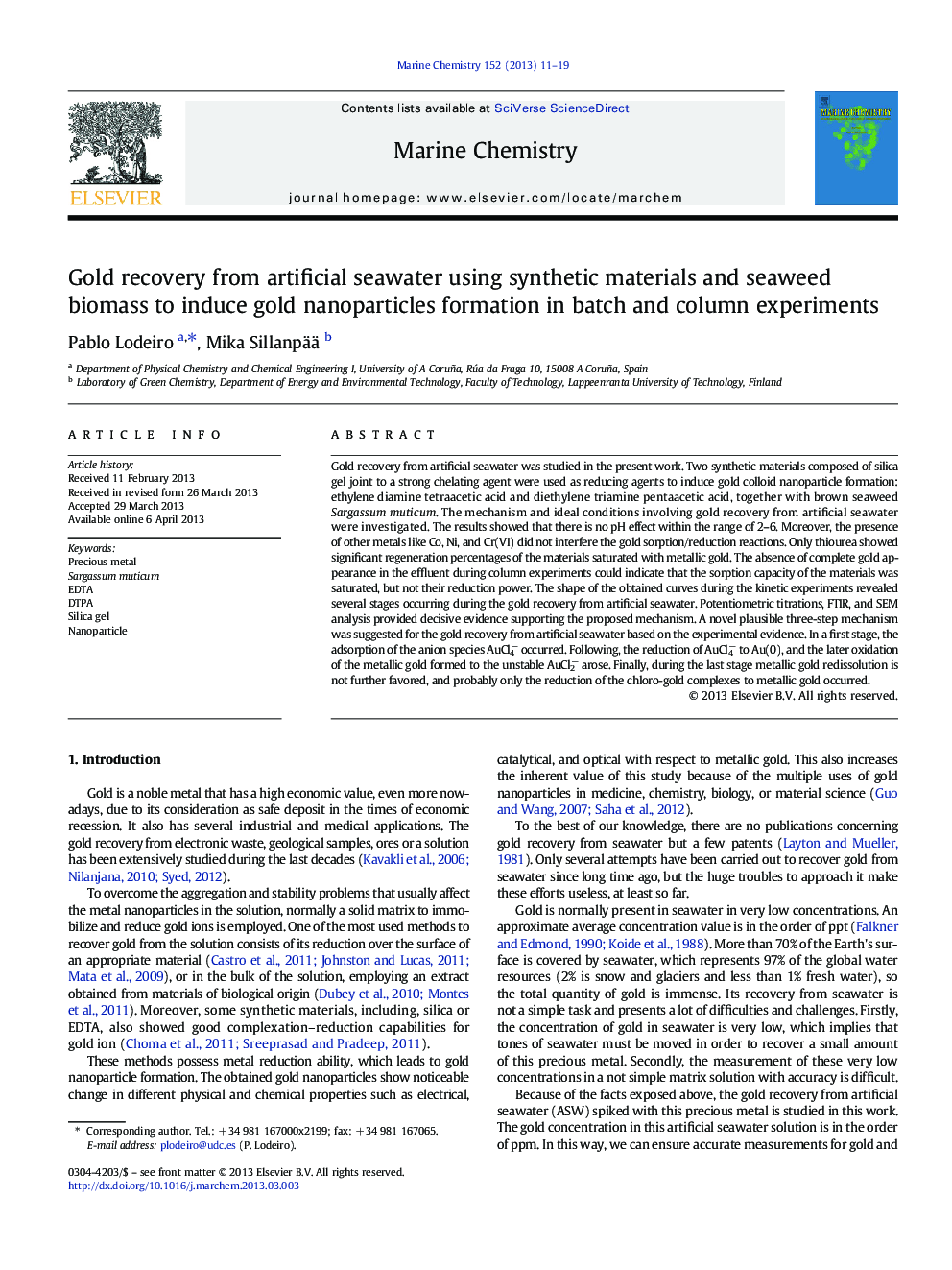| کد مقاله | کد نشریه | سال انتشار | مقاله انگلیسی | نسخه تمام متن |
|---|---|---|---|---|
| 1261428 | 1496683 | 2013 | 9 صفحه PDF | دانلود رایگان |

• Gold recovery from artificial seawater through nanoparticle formation
• No effect of pH or presence of other metal over gold recovery
• A plausible three-step mechanism was suggested for the adsorption–reduction process.
• Titrations, FTIR and SEM provided decisive evidence supporting the mechanism.
Gold recovery from artificial seawater was studied in the present work. Two synthetic materials composed of silica gel joint to a strong chelating agent were used as reducing agents to induce gold colloid nanoparticle formation: ethylene diamine tetraacetic acid and diethylene triamine pentaacetic acid, together with brown seaweed Sargassum muticum. The mechanism and ideal conditions involving gold recovery from artificial seawater were investigated. The results showed that there is no pH effect within the range of 2–6. Moreover, the presence of other metals like Co, Ni, and Cr(VI) did not interfere the gold sorption/reduction reactions. Only thiourea showed significant regeneration percentages of the materials saturated with metallic gold. The absence of complete gold appearance in the effluent during column experiments could indicate that the sorption capacity of the materials was saturated, but not their reduction power. The shape of the obtained curves during the kinetic experiments revealed several stages occurring during the gold recovery from artificial seawater. Potentiometric titrations, FTIR, and SEM analysis provided decisive evidence supporting the proposed mechanism. A novel plausible three-step mechanism was suggested for the gold recovery from artificial seawater based on the experimental evidence. In a first stage, the adsorption of the anion species AuCl4− occurred. Following, the reduction of AuCl4− to Au(0), and the later oxidation of the metallic gold formed to the unstable AuCl2− arose. Finally, during the last stage metallic gold redissolution is not further favored, and probably only the reduction of the chloro-gold complexes to metallic gold occurred.
Gold nanoparticles formation in silica gel-DTPA material, after the recovery of Au from artificial seawater. From left to right: total recovery of 0.05, 0.25, 0.5 and 2.5 mM Au from artificial seawater.Figure optionsDownload as PowerPoint slide
Journal: Marine Chemistry - Volume 152, 20 May 2013, Pages 11–19